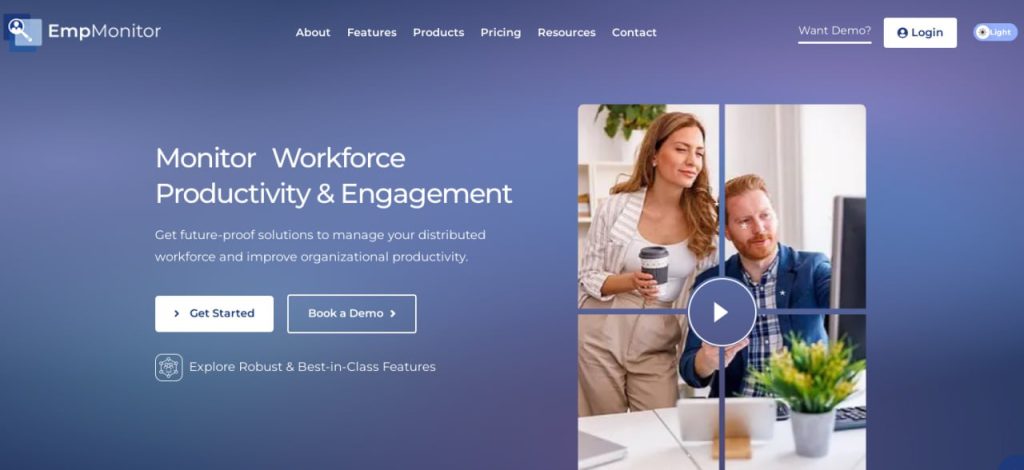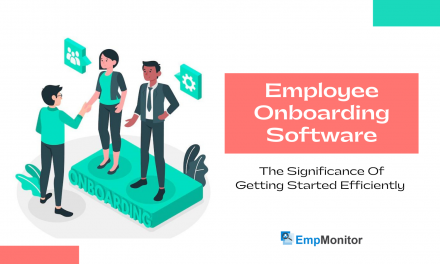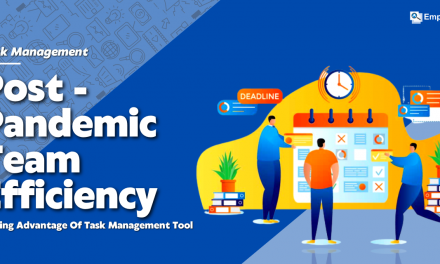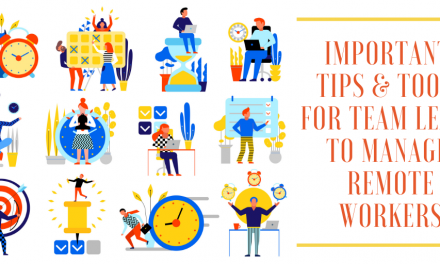Work performance is something that can always vary, it is never stable. There are days when employees are showing excellent performance, but Sometimes barely manage to complete the day with higher productivity levels. And it applies to everyone – we’re all human after all. But when it becomes something of a regular thing for your employees, it is time to consider a performance improvement plan.
But, not every employee sees performance improvement plans the same way. Some see it as a way to improve their performance and some see it as extinction to their employment. And there are performance improvement plan employee rights in the place as well. PIPs aren’t implemented on lost causes. They’re a strategic investment in employees who need additional guidance to get back on track.
What does it take to create a performance improvement plan that actually improves performance?
While the performance improvement work plan template for two employees never looks the same, there are best practices to consider when creating one. Performance improvement plans must be thoughtful, intentional, provide clear direction and align all parties’ expectations.
Stay along to know how to create a performance improvement that drives meaningful results.
What is a Performance Improvement Plan?
According to the definition, a Performance Improvement Plan, or a Performance Action Plan, is a formal document provided to an individual employee who is experiencing performance issues at work.
The purpose of the PIP is to help improve the said performance issues of an individual. Improving the performance of an existing employee is a less costly solution than looking for a replacement for the said employee – in that sense, a PIP can benefit both the employee undergoing it and the company implementing it.
The additional, underlying purpose is to help improve the working of the entire workforce – considering that an efficient workforce is only possible with efficient individuals.
In order to help improve the individual employee’s performance, a Performance Improvement Plan provides:
- The goals the employee is tasked with achieving
- The tasks are meant to help guide the employee toward the said goals
- The time he or she has to achieve the goals
When to Apply a Performance Improvement Plan?
Performance improvement plans have the greatest impact on employees who consistently underperform, but it’s essential to define what that means on the front end. Employees whose work is of lower quality than expected or who struggle to deliver their outputs on time are prime candidates for a performance improvement plan.
Employees tend to treat performance improvement plans rather negatively and often consider them as an informal invitation for termination or demotion. When implementing a PIP, use caution. This decision needs to be well-thought-out. For this, HR needs to:
- Determine if a PIP is really required in this case
- Avoid any bias implication that may occur during employee’s performance monitoring
- Provide support to the employee and their manager alongside the plan implementation
- State clear goals, performance assessment criteria, and deadlines in the PIP
How does a Performance Improvement Plan work?
From the point of view of the employee, a Performance Improvement Plan is meant to address his or her performance issues and help them overcome the said issues. In that sense, it’s similar to being on probation work.
Let’s call the employee Rohan.
First, Rohan’s employer and an HR representative meet up with Rohan and explain to him the performance issue they noticed he’s been having.
They explain to him the goals he needs to reach in order to improve his performance and the time period he’ll have at his disposal for this purpose.
He’s then given the goal-related tasks he’ll need to tackle during this time, and the resources he’ll have at his disposal to do it.
He may have further questions about his position and the duties covered by the Performance Improvement Plan, and he can ask them at this meeting. If Rohan agrees to participate in his proposed PIP, he needs to sign the formal document.
Rohan is closely watched during this time period – he has frequent check-ups with his assigned supervisor, who monitors his progress.
Unless he is able to carry out his tasks and reach his goals during this time, his position at the company is further discussed — as the end result of an unsatisfactory PIP, he may be fired.
How long should a performance improvement plan last?
The time frame for a Performance Improvement Plan is usually between 30 and 120 days.
This usually depends on the type of performance issue(s), and how much time Rohan will really need to improve his performance on the said issue(s).
How to Create a Perfect Performance Improvement Plan?
Identify the Underperforming Employee
Underperforming employees can be challenging to identify within an organization. For example, an underperformer could be a new hire that has a larger learning curve than originally anticipated. Even a top performer can become disengaged if there’s a lack of growth opportunities or challenges. According to PeopleGoal, an employee experience platform, some signs that may suggest that an employee is struggling include:
- Decreased productivity
- Decreased engagement
- Increased time off
- Increased tardiness
Determine the Right Course of Action
Performance improvement plans can be beneficial in certain circumstances. However, they can also be a detriment if there isn’t a genuine commitment to improvement. According to SHRM, performance improvement plans should be implemented when there is “a commitment to help the employee improve, not as a way for frustrated managers to start the termination process.”
To assess whether a performance improvement plan is the appropriate next step, ask yourself:
- Is it likely that the issue can be resolved through a formal improvement plan? Problems that involve sales goals, quality ratings, and other quantitative objectives are typically issues that could be resolved with a performance improvement plan. Issues related to a poor attitude or bad behaviors, on the other hand, usually aren’t as well-suited to using the goal-oriented process of a performance improvement plan.
- Has the employee received the proper training to perform the job well? Was the employee’s onboarding process sufficient? Additional training outlined in a performance improvement plan can help correct any gaps in training.
- Is there a known personal issue affecting the employee’s performance? When an employee experiences troubles in their personal life, it can affect their work performance. A performance improvement plan can help the employee get refocused and back on track in a reasonable time frame.
Draft an Improvement Plan
Once the need for a performance improvement plan has been established, it’s time to start drafting the plan. As you write the performance improvement plan, be sure to:
- Define Standard level of performance. Consider the employee’s job description as well as the company guidelines outlined in your employee handbook.
- Identify areas where the employee’s performance is lacking. Include specific details, such as dates, specific data, detailed explanations, and any previous guidance or reviews given to the employee.
- Set specific, measurable, attainable, relevant, and time-bound (SMART) goals. Keep in mind, that performance improvement plans usually last 30, 60, or 90 days. An example of a SMART goal could be, “John Smith must produce at least 100 units per month for the next three months.
- Guide what the company will do or provide to help the employee achieve these goals. For example, a manager might provide additional training, resources, or coaching to help an employee close a skills gap.
- Include how often you will meet with the employee to review their progress. Weekly check-in meetings can be common, but the frequency can depend on the goals or circumstances.
- Clearly state the consequences of not meeting the objectives of the plan. Consequences may include a demotion, transfer to a different position, or termination.
Review the Plan
HR should review the plan with a focus on removing any bias against the employee. Is the performance issue clearly stated and well-substantiated? Are the objectives fair and the time frames reasonable? For example, is a salesperson given a sales goal that far surpasses the projected sales of the clients assigned?
Is the employee being given the proper tools and training needed to improve? If it’s a relatively new employee, was an adequate onboarding effort in place to help the employee become acclimated? If HR has a role in making those provisions, that process should start immediately. The key to this step is to ensure that the plan is attainable and fair and not just a means to terminate an employee.
Implement the Plan
It’s now time to meet with the employee to discuss the plan and your expectations. A word of caution: performance improvement plans tend to get a bad rap with employees, as they can often be seen as the first step toward termination. As a result, some employees may decide to quit, rather than stick around for what they believe to be inevitable. It’s also important to note that not every employee will respond to criticism well.
When you meet with the employee, it’s important to communicate the company’s commitment to the plan and to the employee’s success. Employee feedback should also be encouraged during this time to help clarify any areas of confusion and understand their perspective on the current situation. After reviewing the plan and making any modifications, you and the employee should both agree to and sign the written plan.
Monitor Progress
As stated in the performance improvement plan, you should regularly meet to review the employee’s progress toward meeting their performance goals. Ensure all meetings are scheduled and occur on time. Canceling, rescheduling or tardiness to meetings could convey a lack of importance or commitment from you to the employee.
During these check-in meetings, evaluate the employee’s progress, identifying why progress has or has not been made. If needed, provide solutions or resources to help get the employee back on track.
Plan Conclusion
In the end, it’s time to make the conclusions:
Has the Performance Improvement Plan been successful?
Has the employee worked on and improved his or her performance issue? If not, you may need to terminate the position. If yes, it’ll mean continued employment.
Now, if the employee exceeded expectations, you may even want to give out a salary increase, to encourage the employee to continue with the said exceptional performance.
Track Employee Performance in Real-Time: EmpMonitor
EmpMonitor is a cloud-based employee monitoring system, and you can monitor every activity of your employees from a single dashboard. With the help of the EmpMonitor, you can monitor every activity of your employees during office hours. It will help you to measure and ensure that they meet the productivity parameters.
EmpMonitor offers many useful tools to ensure the productivity and efficiency of your employees:
- Time Tracking:
With the Help of EmpMonitor, you can track every minute of your employee’s working hours. It gives you a detailed report on how much time they have been active, idle, neutral, or offline from a single dashboard.
- Productivity Tracking:
With the help of EmpMonitor, you can identify the productivity killers and provide a clear understanding of every process from end to end. You can track and measure the productivity of your employees.
- Regular Screenshots:
EmpMonitor captures screenshots of your employee’s system. It keeps them in check whether they are working on assigned tasks or not.
- Keystroke Logging:
Keystroke logging is one of the best ways to ensure data security. It lets you know about the words that employees type.
Check Out Our Latest Posts
Top 8 Benefits of Automated Timekeeping For Employers & Employees
Best Productivity Apps In 2022 For Small Businesses
What Is a Tech Stack
Wrapping Up:
The purpose of a Performance Improvement Plan should never be to find and document faults with employee work, to have tangible justification for firing them. If an employer and manager are going through the trouble of structuring such a plan, the only viable purpose should be to improve employee performance. If you want to avoid this situation, use EmpMonitor to track and improve their performance.













